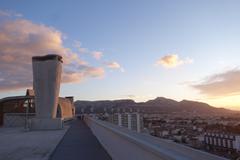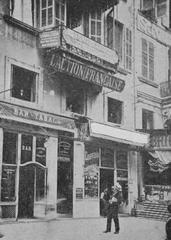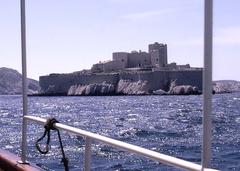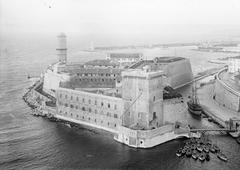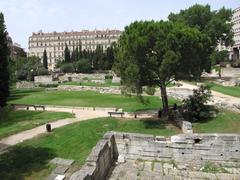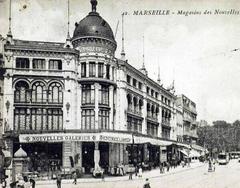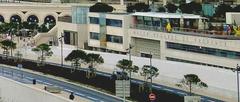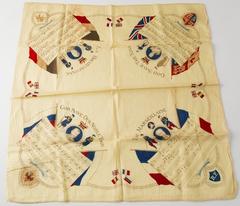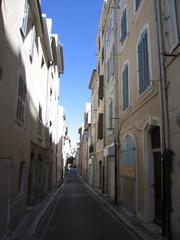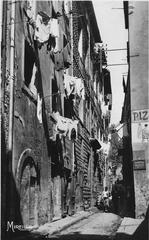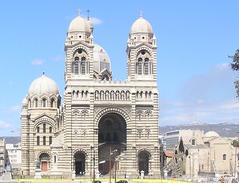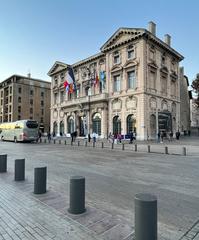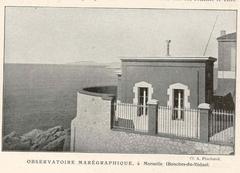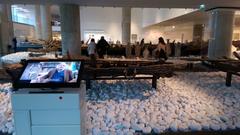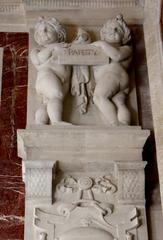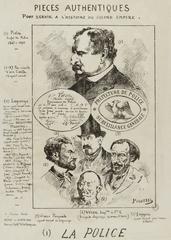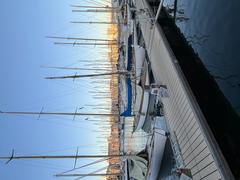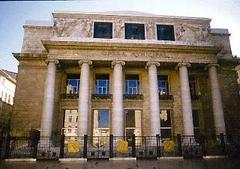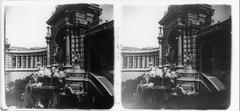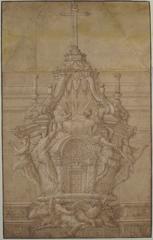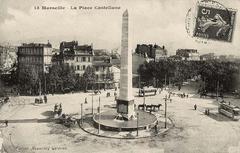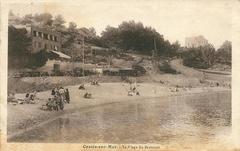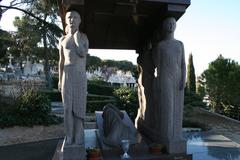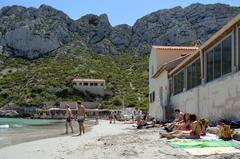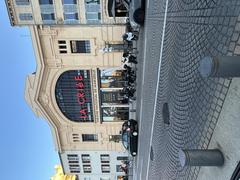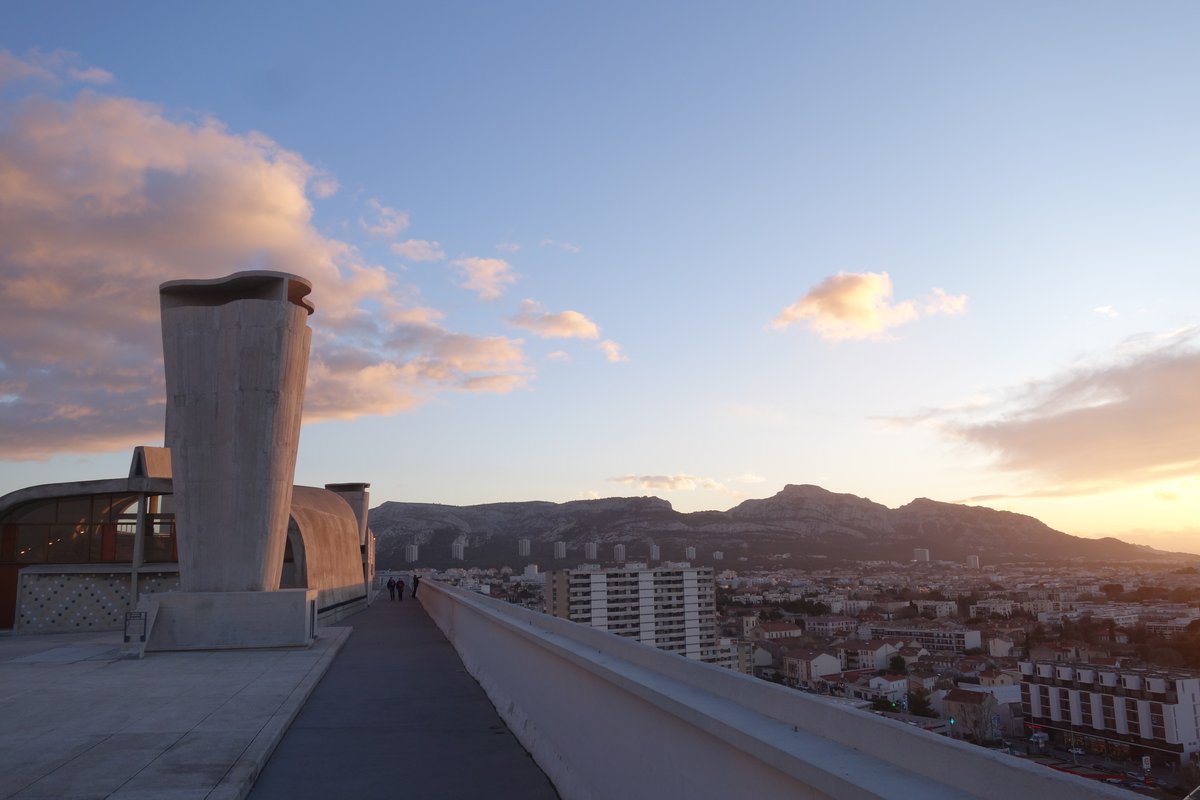
Unité d’Habitation de Marseille: Visiting Hours, Tickets, and Comprehensive Guide
Date: 14/06/2025
Introduction
The Unité d’Habitation de Marseille, also known as La Cité Radieuse, is a pioneering achievement in modernist architecture and urban design. Conceived by the visionary Le Corbusier and completed between 1947 and 1952, this “vertical village” responded to post-World War II housing shortages with a revolutionary approach that integrated living, shopping, and recreation within a single concrete structure. Its innovative features—including the Modulor system, pilotis, and “streets in the sky”—have profoundly influenced global architectural thought. In 2016, the building was designated a UNESCO World Heritage Site, cementing its status as a landmark of 20th-century design (sites-le-corbusier.org; Wikipedia).
Today, the Unité d’Habitation remains a vibrant, inhabited community that welcomes visitors to explore its commercial spaces, celebrated rooftop terrace (home to the MAMO art center), and on-site hotel-restaurant, all echoing Le Corbusier’s vision of self-sustaining urban living. This guide provides detailed information on visiting hours, tickets, guided tours, accessibility, and practical travel tips, equipping you to make the most of your visit to this architectural gem in Marseille’s 8th arrondissement (Marseille Tourist Office; Cité Radieuse Official).
Table of Contents
- Introduction
- History and Architectural Context
- Design Principles and Innovations
- Visiting Unité d’Habitation: Hours, Tickets, and Tours
- Accessibility and Visitor Tips
- Key Features and Visitor Highlights
- FAQ
- Plan Your Visit
- References
History and Architectural Context
Le Corbusier’s Unité d’Habitation was conceived in the aftermath of WWII, at a critical time for housing and urban renewal in Europe. Completed in 1952, the building combined 337 duplex apartments (in 23 layouts) intended for 1,500–1,700 residents. Its design introduced the concept of a “vertical city,” integrating amenities such as an internal shopping street, communal facilities, and a rooftop terrace into a single, self-sufficient structure (sites-le-corbusier.org; Wikipedia).
The building’s Brutalist aesthetic, characterized by raw béton brut concrete and bold geometric forms, was initially controversial but has since become iconic. The design’s use of pilotis (concrete columns), internal “streets,” and the Modulor proportional system set new standards for collective housing and influenced generations of architects (archiobjects.org).
Design Principles and Innovations
Structural Innovations
- Pilotis and Structural Frame: The building is elevated on pilotis, maximizing light and air circulation and freeing the ground floor for communal use (lecorbusier-worldheritage.org).
- Béton Brut: The use of raw, unfinished concrete became a defining feature and gave rise to the Brutalist movement (archiobjects.org).
- Modulor System: Le Corbusier’s proportional scale, based on human measurements, guided the dimensions of apartments and communal spaces for optimal comfort and efficiency (lecorbusier-worldheritage.org).
Spatial Organization
- Duplex Apartments: Most units are duplexes, spanning two levels and stretching across the width of the building, ensuring cross-ventilation, natural light, and private balconies (Wikipedia).
- Internal Streets: Every third floor features wide corridors—“streets in the sky”—that foster community interaction (Wikipedia).
- Integrated Services: Shops, a restaurant, and communal facilities are located on the 7th and 8th floors; the rooftop terrace includes a running track, paddling pool, and the MaMo art center (ArchDaily).
Interior Innovations
- Built-in Furniture: Apartments feature space-saving, built-in storage and cabinetry, much of it designed with Charlotte Perriand and Jean Prouvé (Wikipedia).
- Modern Kitchens: Early adoption of mechanical ventilation, modern appliances, and efficient layouts set new standards for practical living (lecorbusier-worldheritage.org).
- Loggias and Sun Control: Each unit includes a loggia with brise-soleil, providing outdoor space and climate control (lecorbusier-worldheritage.org).
Visiting Unité d’Habitation: Hours, Tickets, and Tours
Opening Hours
- General Access: Tuesday to Sunday, 10:00 AM to 6:00 PM (closed Mondays and public holidays). Check the official website for possible seasonal changes (Marseille Tourist Office).
- Commercial Areas: Internal shopping street and shops are generally open Monday to Saturday, 10:00 AM to 7:00 PM.
- Rooftop Terrace and Tours: Accessible via guided tours, typically available Wednesday to Sunday.
Tickets and Reservations
- Shopping Street Access: Free entry.
- Rooftop and Guided Tours: Tickets are generally €8–€10 for adults, with discounts for children, students, and seniors. Advance booking is strongly recommended during peak seasons (Marseille Tourisme).
- Booking: Reserve online via the Marseille Tourist Office or Cité Radieuse Official.
Guided Tours
- Content: Tours cover the entrance hall, corridors, a show apartment (subject to availability), shopping street, and rooftop terrace (Cité Radieuse Official).
- Languages: Available in French, English, and other languages.
- Duration: Approximately 1–2 hours.
- Special Access: Some areas (apartments, communal interiors) can only be visited with a guide.
Accessibility and Visitor Tips
- Wheelchair Access: Most public areas, including the entrance, shopping street, and rooftop, are accessible. Some apartments and rooftop features may have limited access; contact the visitor center for details (Cité Radieuse Official).
- Families and Groups: Tours for children and school groups are available by advance arrangement.
- Public Transport: Take Metro Line 2 to “Rond-Point du Prado,” then bus B1 to “Le Corbusier.”
- Parking: Limited; public transport is recommended.
- Photography: Permitted in public areas and during tours; flash and tripods may be restricted.
- Etiquette: As a functioning residential building, visitors should respect residents’ privacy and avoid excessive noise.
Key Features and Visitor Highlights
- Show Apartment: Preserved in original condition, illustrating Le Corbusier’s design philosophy (may be temporarily closed for renovation).
- Shopping Street: Lined with shops, a bookshop, restaurant, and offices (Fondation Le Corbusier).
- Rooftop Terrace & MaMo Art Center: Panoramic views, running track, pool, and rotating exhibitions (ArchDaily).
- Le Ventre de l’Architecte Restaurant: Dine inside the building, experiencing the ambiance of its unique interiors.
- Hotel Le Corbusier: Stay overnight in rooms furnished according to Le Corbusier’s specifications (The Spaces).
Frequently Asked Questions (FAQ)
Q: What are the Unité d’Habitation visiting hours?
A: Tuesday to Sunday, 10:00 AM to 6:00 PM. Closed Mondays and public holidays.
Q: How do I book a guided tour?
A: Reserve online via the Marseille Tourist Office or the official Cité Radieuse website.
Q: Is the building wheelchair accessible?
A: Most public spaces are accessible; contact in advance for specific needs.
Q: Can I visit the rooftop terrace?
A: Yes, via guided tours and during designated public hours.
Q: Are children welcome?
A: Yes, family-friendly tours are available.
Q: Is photography allowed?
A: Yes, in public and guided areas—no flash or tripods unless permitted.
Plan Your Visit
To get the most from your visit:
- Book tickets and tours in advance, especially during busy periods.
- Visit on weekday mornings for a quieter experience.
- Combine your visit with other Marseille highlights, such as the MuCEM or Vieux-Port.
- Download the Audiala app for audio guides and updates on exhibitions.
For official updates, tickets, and visitor guidelines, consult Cité Radieuse Official and Marseille Tourist Office.
References and Further Reading
- Unité d’Habitation de Marseille – sites-le-corbusier.org
- Unité d’Habitation – Wikipedia
- Cité Radieuse – Marseille Tourisme
- Guide Visit – Cité Radieuse Official
- Marseille Tourist Office
- Artchitectours
Experience the Unité d’Habitation de Marseille, where history, design, and community converge in one of the world’s most influential modernist landmarks. Plan your visit today and immerse yourself in Le Corbusier’s enduring legacy.
.
